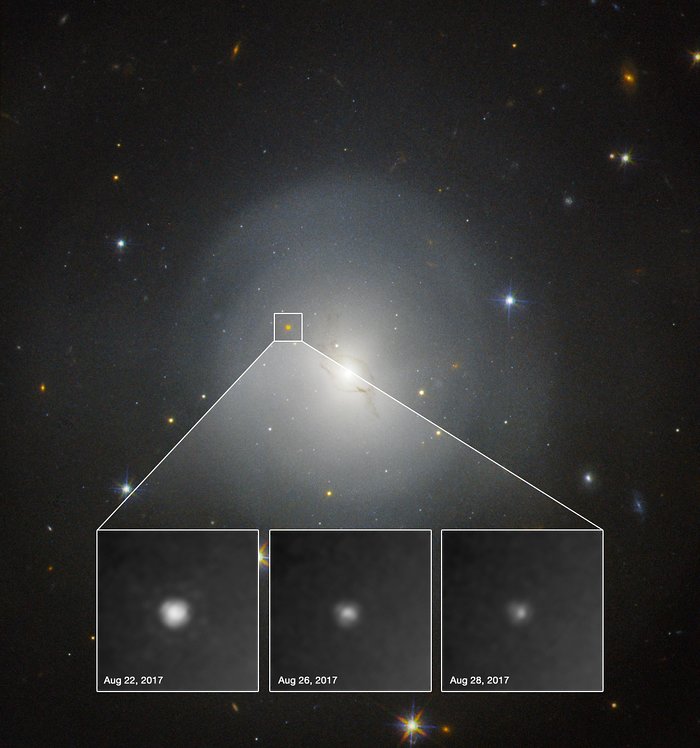Hubble observes first kilonova
On 17 August 2017, the Laser Interferometer Gravitational-Wave Observatory (LIGO) and the Virgo Interferometerboth detected gravitational waves from the collision between two neutron stars. Within 12 hours observatories had identified the source of the event within the lenticular galaxy NGC 4993, shown in this image gathered with the NASA/ESA Hubble Space Telescope. The associated stellar flare, a kilonova, is clearly visible in the Hubble observations. This is the first time the optical counterpart of a gravitational wave event was observed.
Hubble observed the kilonova gradually fading over the course of six days, as shown in these observations taken in between 22 and 28 August (insets).
Źródło:NASA and ESA. Acknowledgment: N. Tanvir (U. Leicester), A. Levan (U. Warwick), and A. Fruchter and O. Fox (STScI)
O zdjęciu
| Identyfikator: | eso1733n |
| Typ: | Kolaż |
| Data publikacji: | 16 października 2017 16:00 |
| Powiązane komunikaty: | eso1733 |
| Rozmiar: | 1365 x 1458 px |
O obiekcie
| Typ: | Local Universe : Star : Evolutionary Stage : Neutron Star Local Universe : Galaxy : Type : Elliptical |
| Kategoria: | Stars |
Kolory i filtry
| Pasmo | Długość fali | Teleskop |
|---|---|---|
| Optyczny V | 606 nm | Hubble Space Telescope ACS |
| Podczerwony J | 1.1 μm | Hubble Space Telescope WFC3 |
| Podczerwony H | 1.6 μm | Hubble Space Telescope WFC3 |
| Podczerwony H | 1.6 μm | Hubble Space Telescope WFC3 |
| Podczerwony H | 1.6 μm | Hubble Space Telescope WFC3 |
| Podczerwony H | 1.6 μm | Hubble Space Telescope WFC3 |
